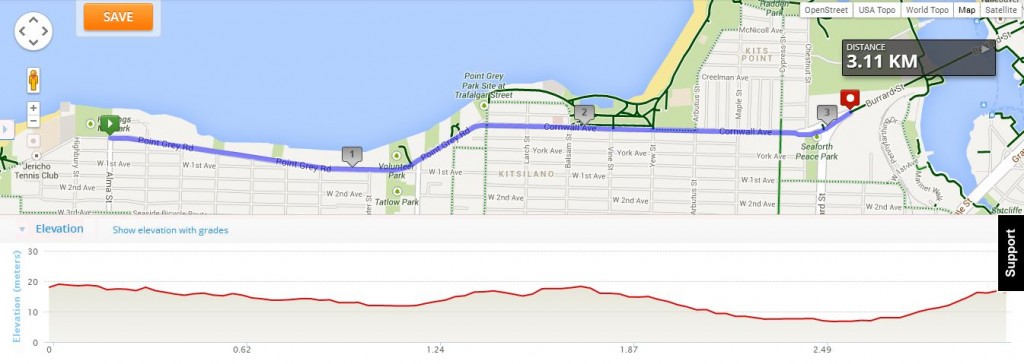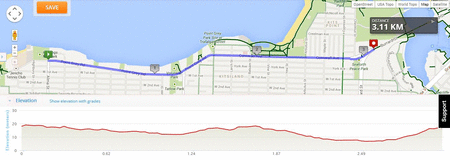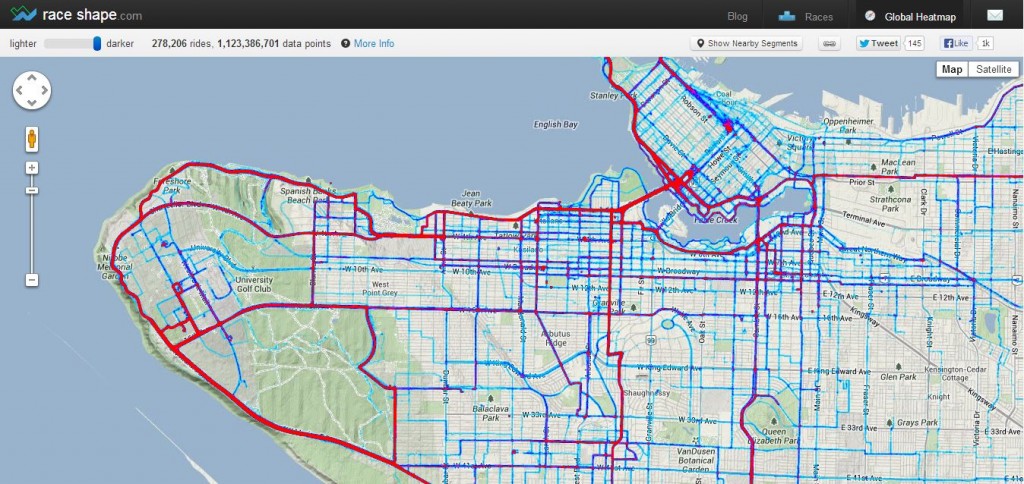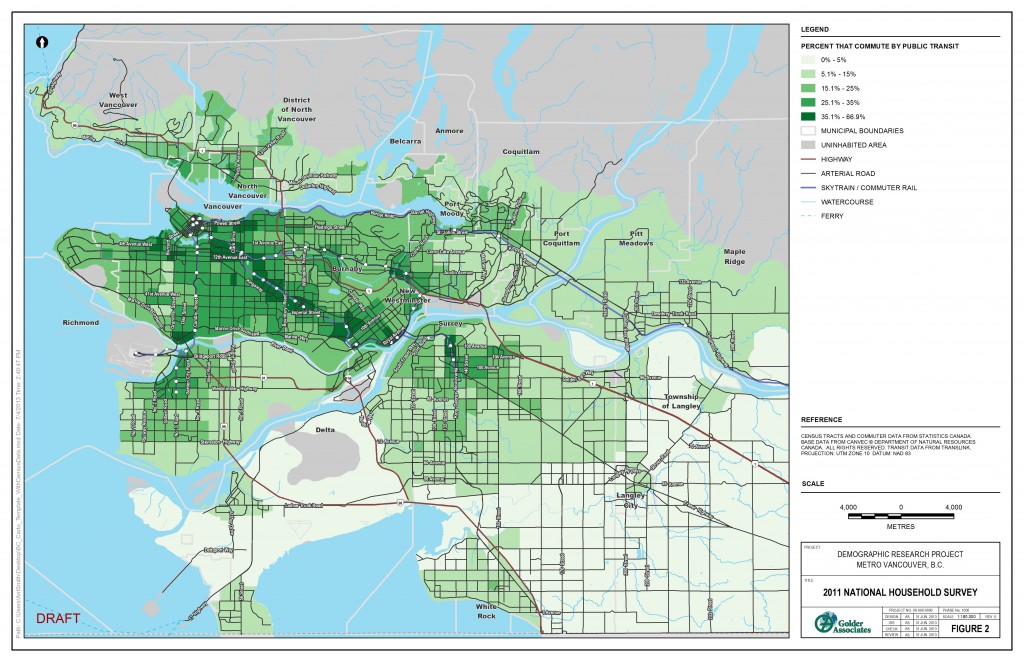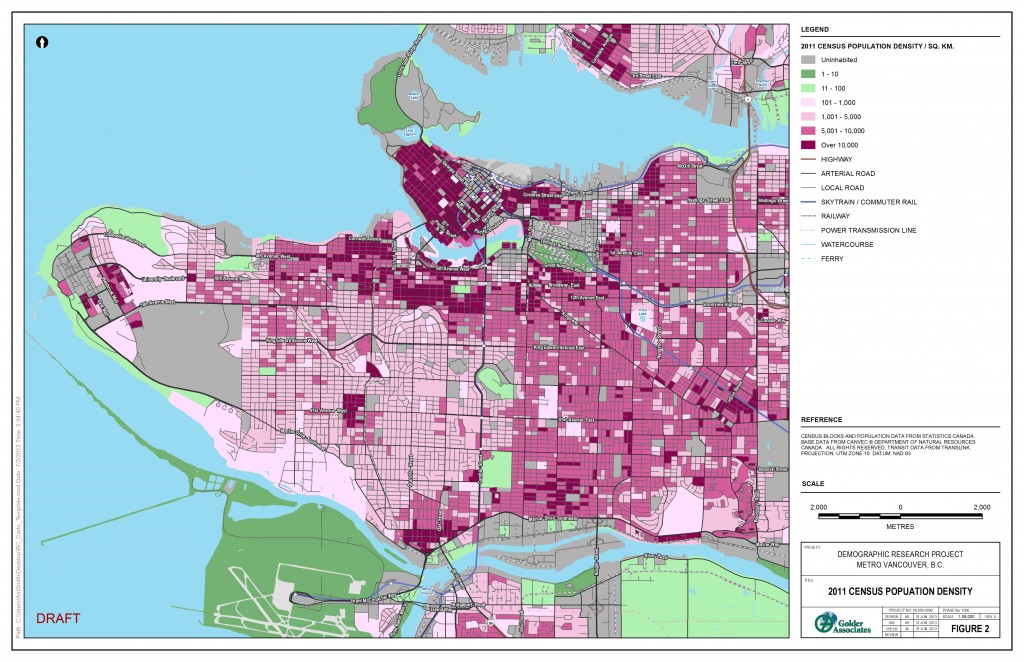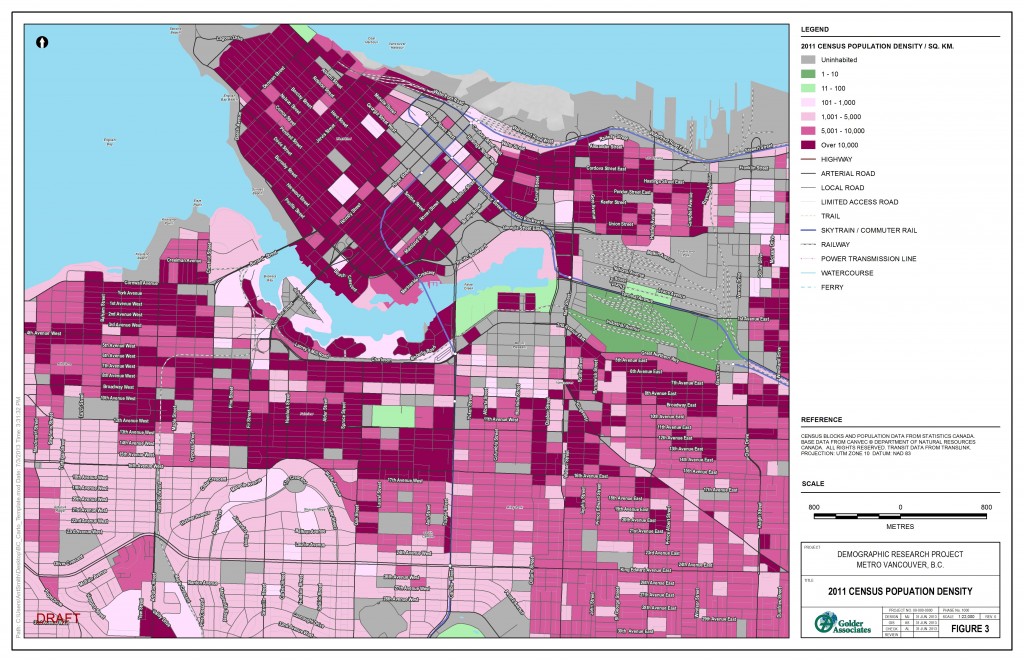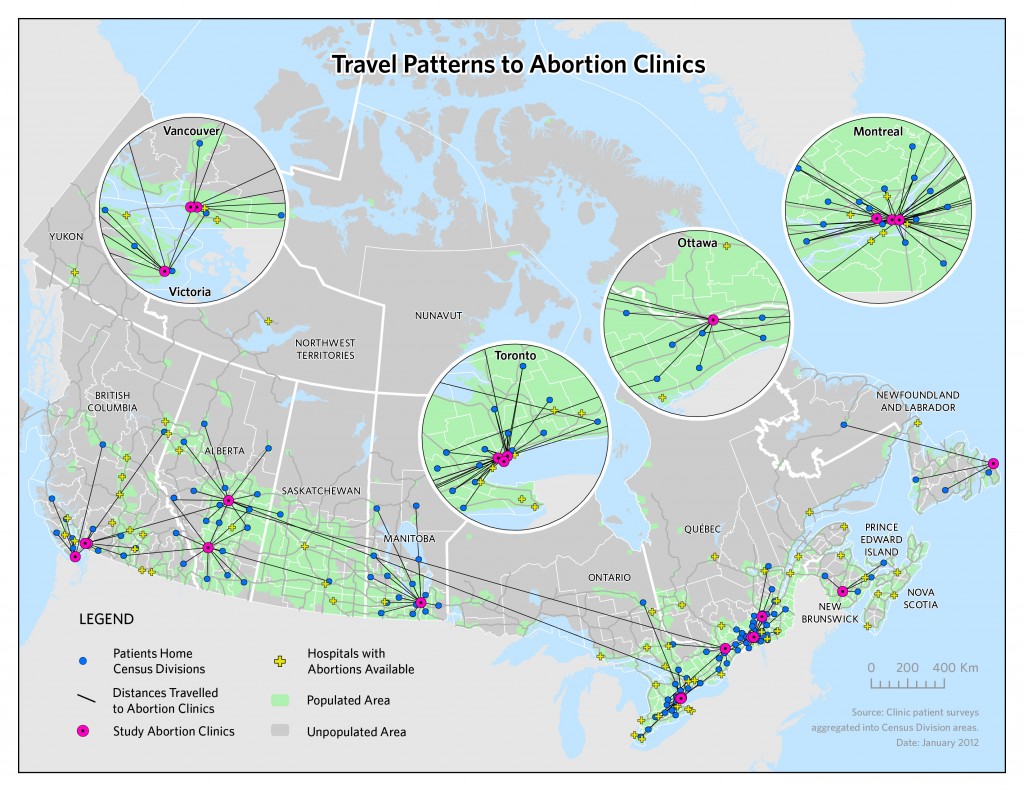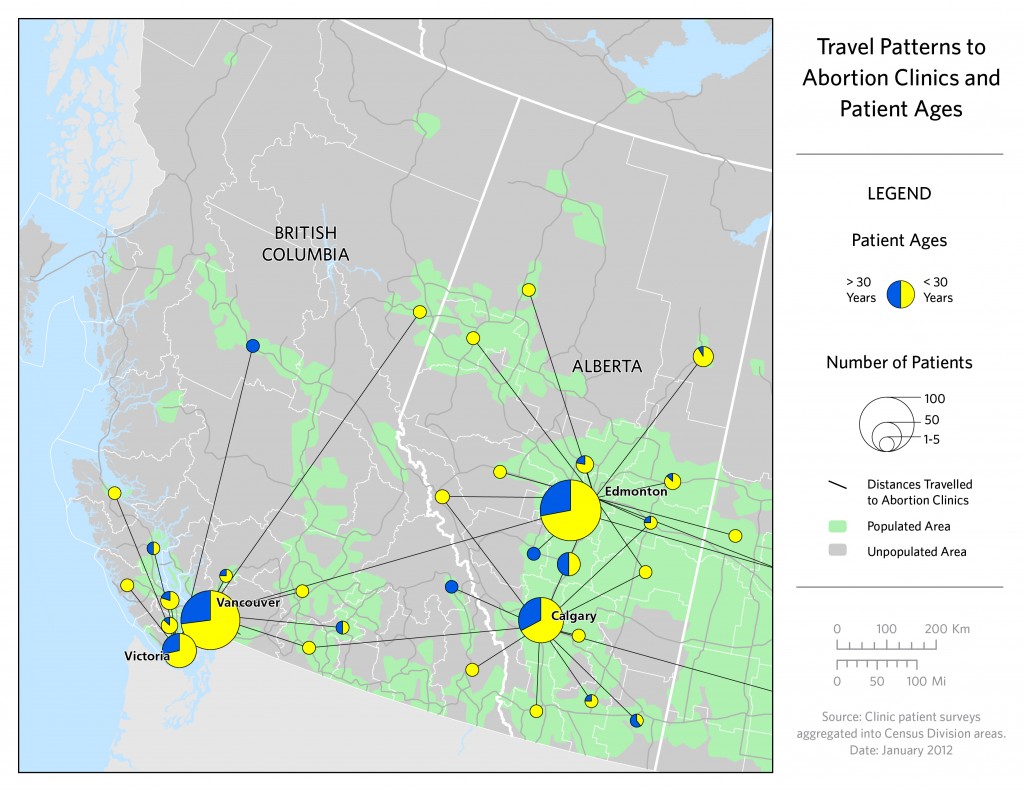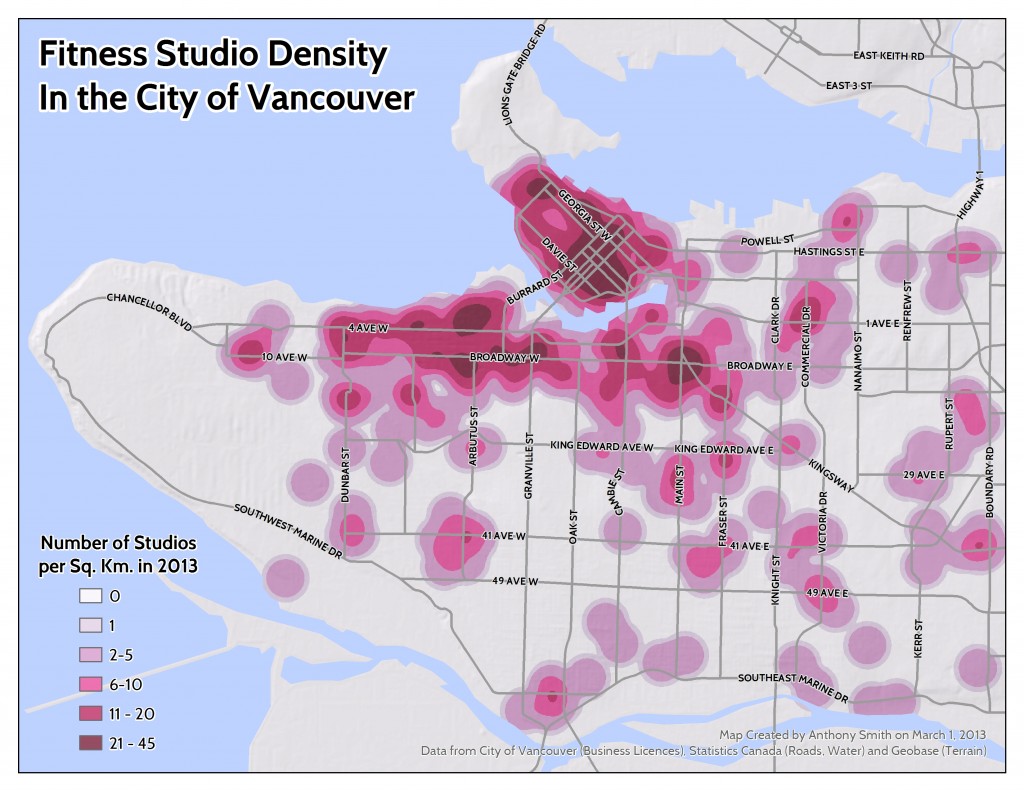HELLO, PLEASE NOTE THIS SITE HAS BEEN ARCHIVED AND THE CONTENT HAS BEEN RE-POSTED ON MY NEW SITE HERE:
http://healthycitymaps.blogspot.ca/2013/10/walkmap-preview.html
——————————————————————————————-
I am in the home stretch of creating a new open source walkability dataset I am calling “WalkMap” based on open data obtained from Open Street Map. The key benefit of using the OSM data is it includes all urban walking paths and trails in addition to main roads. I am currently refining the processing model for the Greater Vancouver area and hope to make this data available for all of Canada in the next few months. Currently Walkscore (TM) provides a great user interface but their data are fairly coarse-grained and very expensive to obtain. Therefore, my work is based on a unique 100m processing grid and I am planning to provide both the methodology and outputs via an open source licence.
My goal is to create one primary WalkMap Index, as well as specific measures of the following WalkMap components:
- Walkable Area – The total area you can access by walking 800m along a road or trail in every possible direction
- Connectivity – The density of street street intersections
- Destinations – The number of shops, cafes or other businesses within walking distance.
- Infrastructure – The number of crosswalks, benches, water fountains, and other pedestrian infrastructure.
- Nature – Proportion of the walkable area that is natural vegetation, recreation or park space.
I will also visualized my results on a simple mapping portal with cartography handled by MapBox, another exciting tool I am learning to use:
I have not designed a legend yet, but here is the basic story:
Green = More Walkable, Red =Less Walkable, No colour = Not Walkable
Please subscribe to this blog for future project updates or post a comment below.

